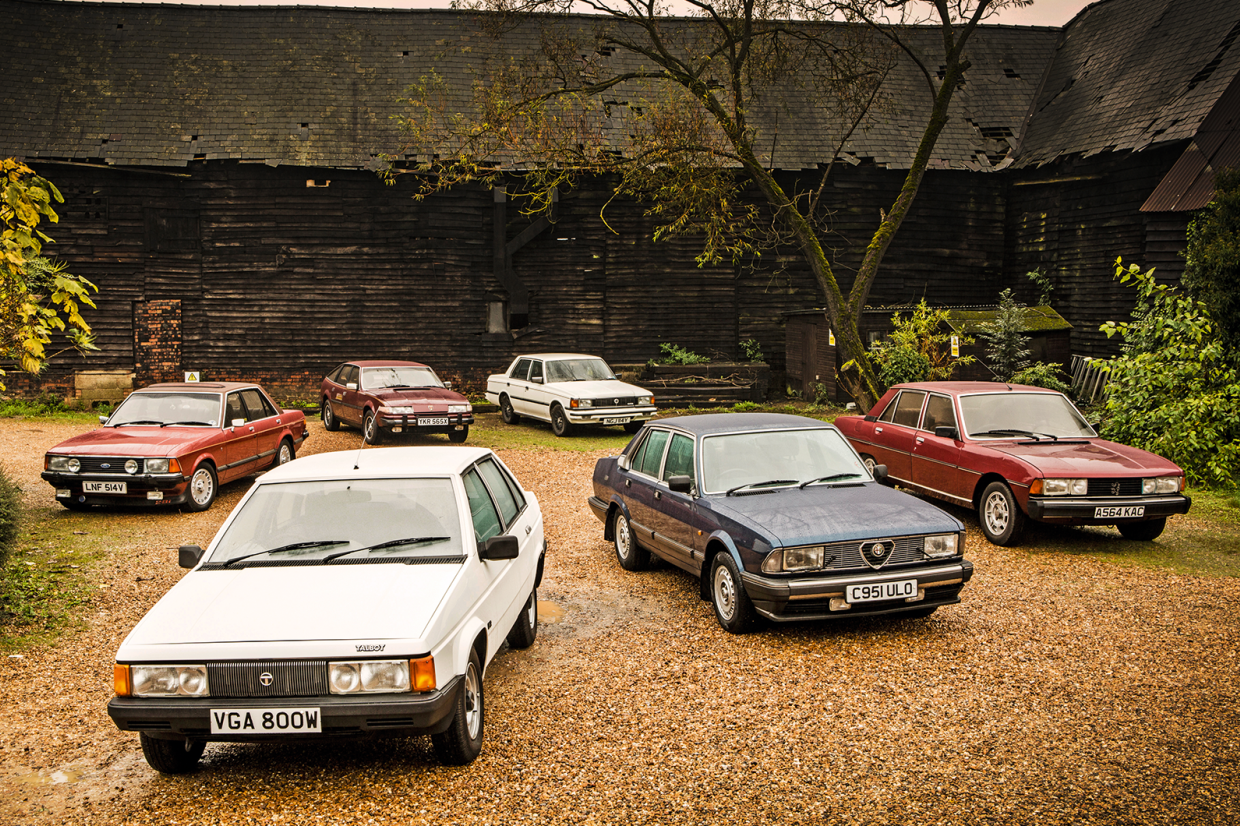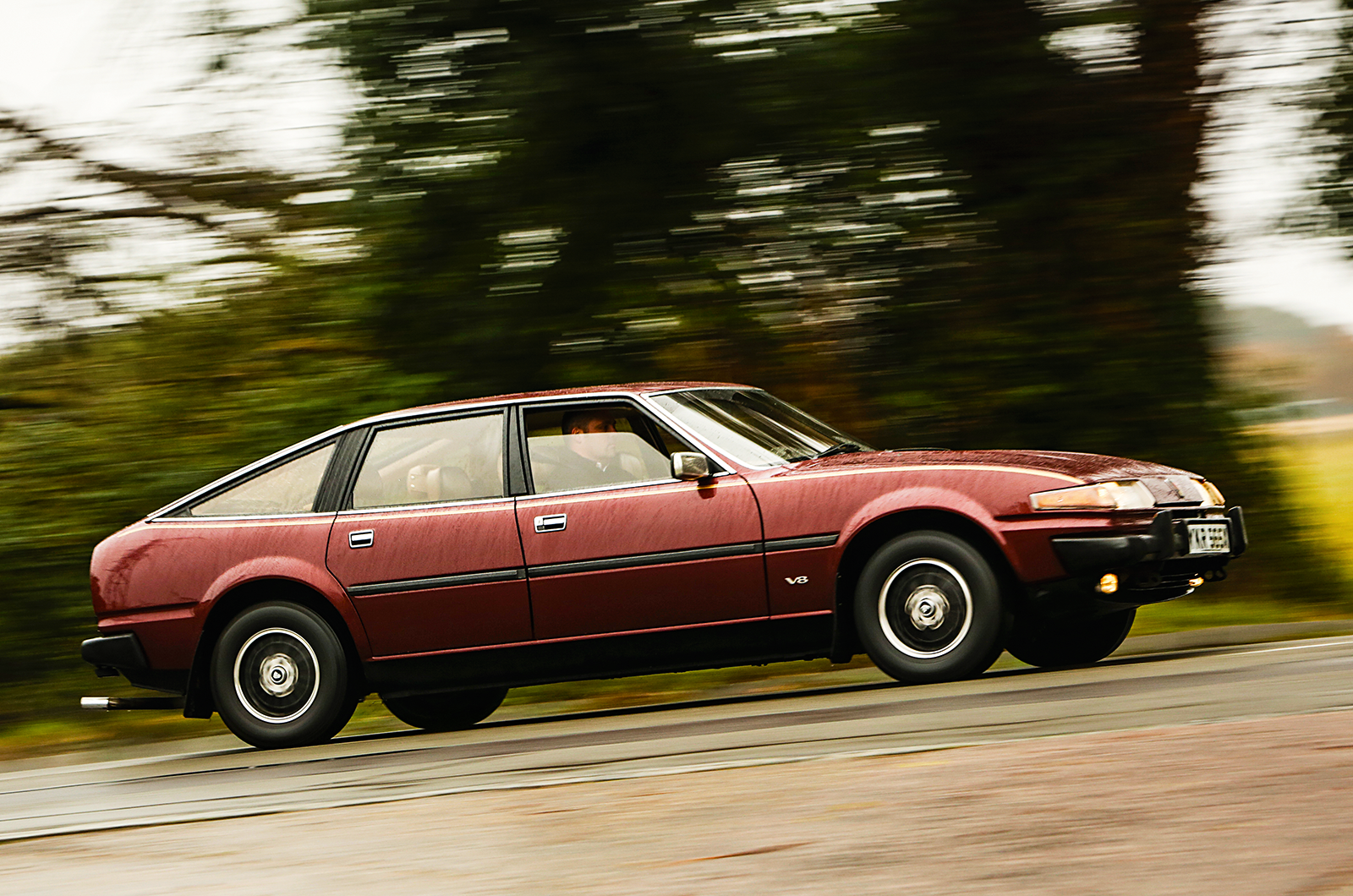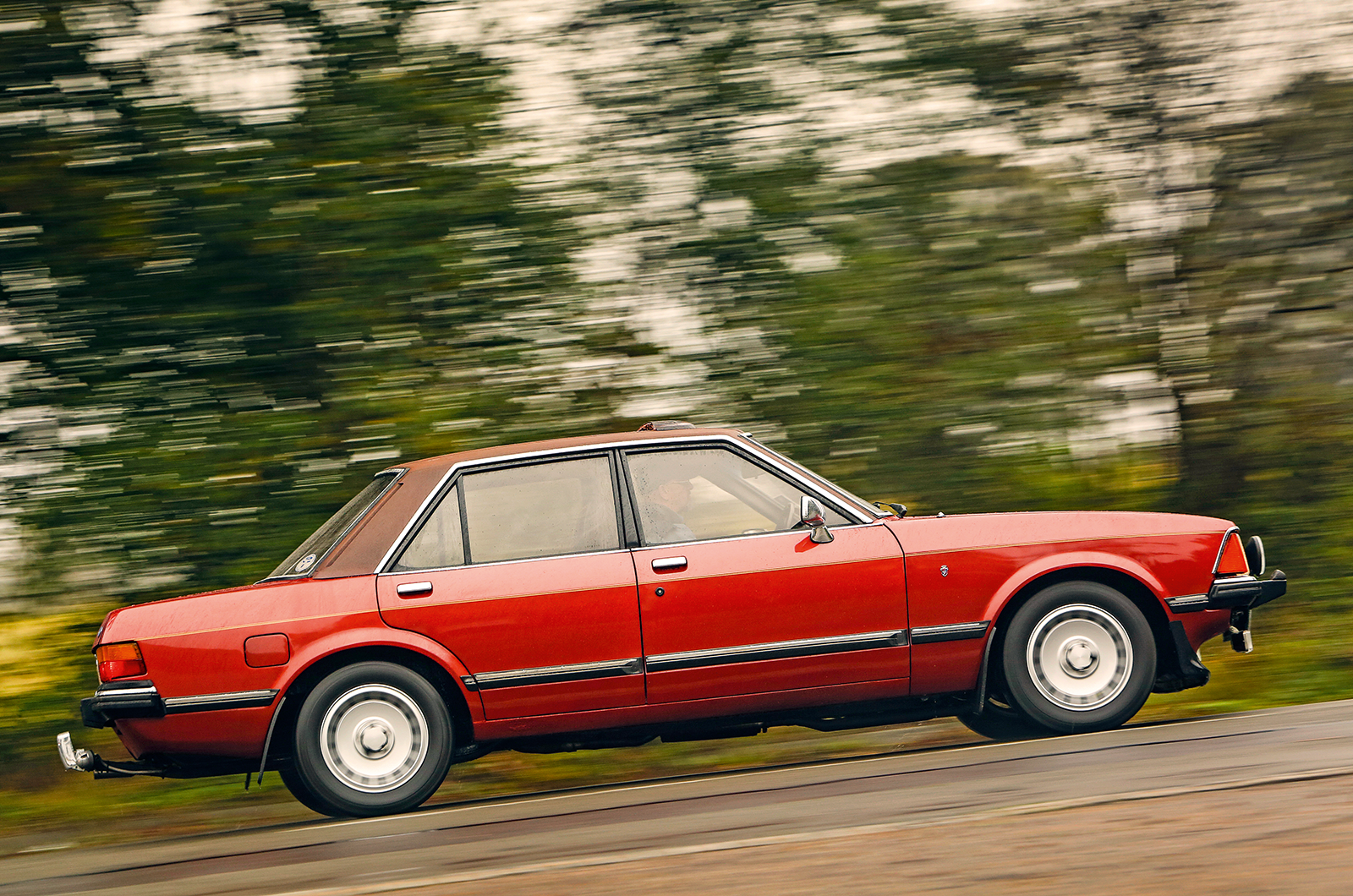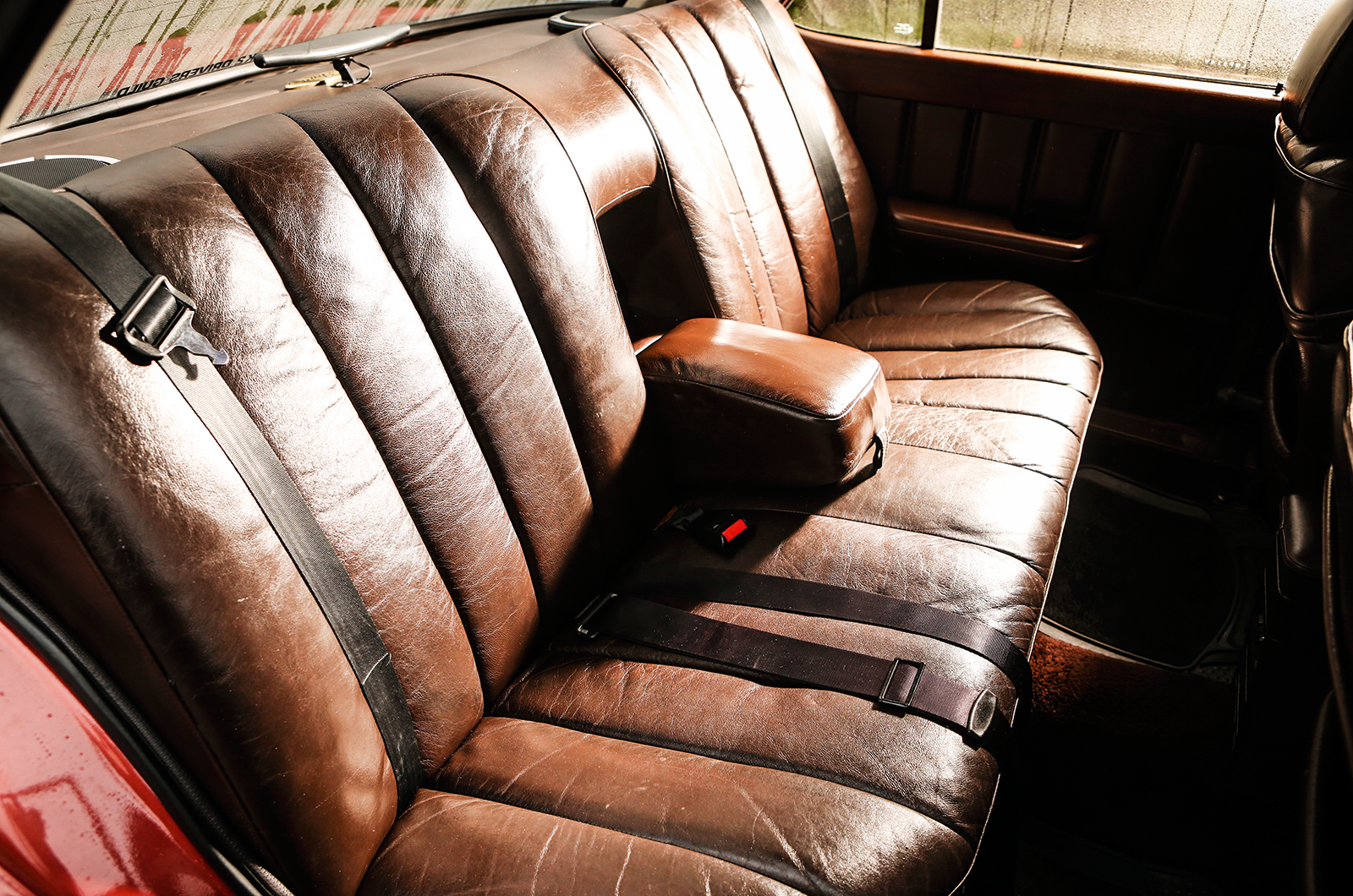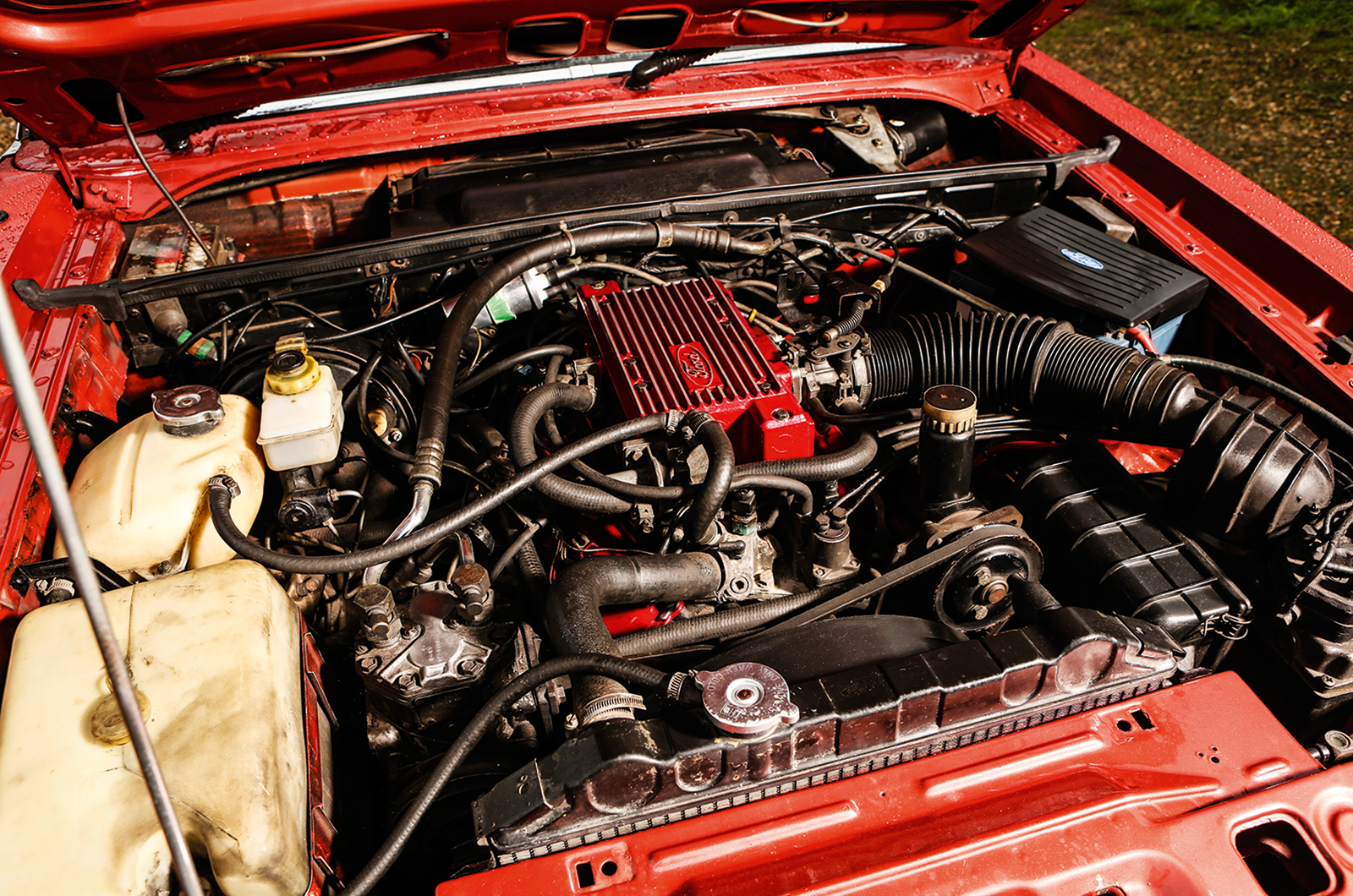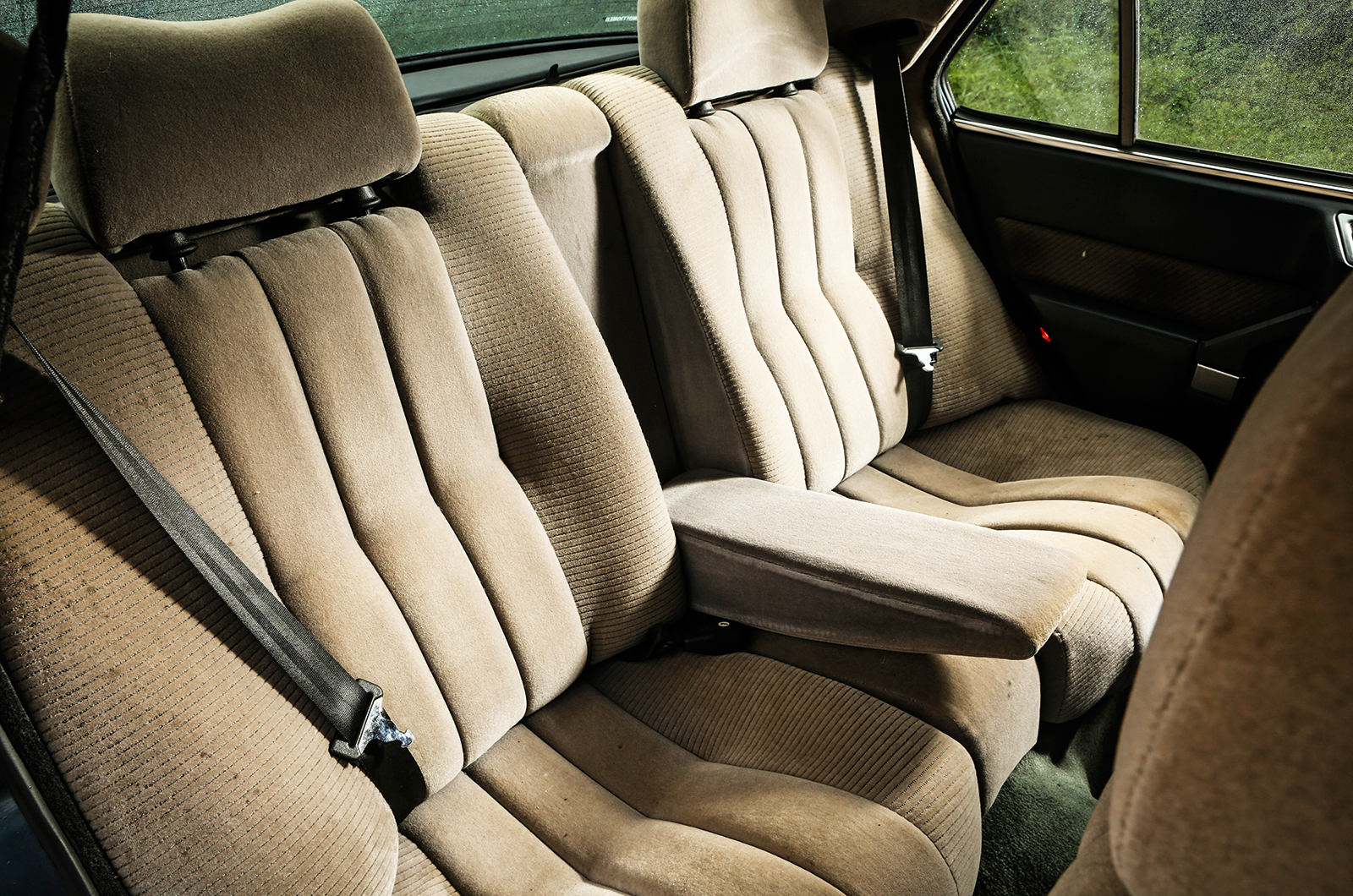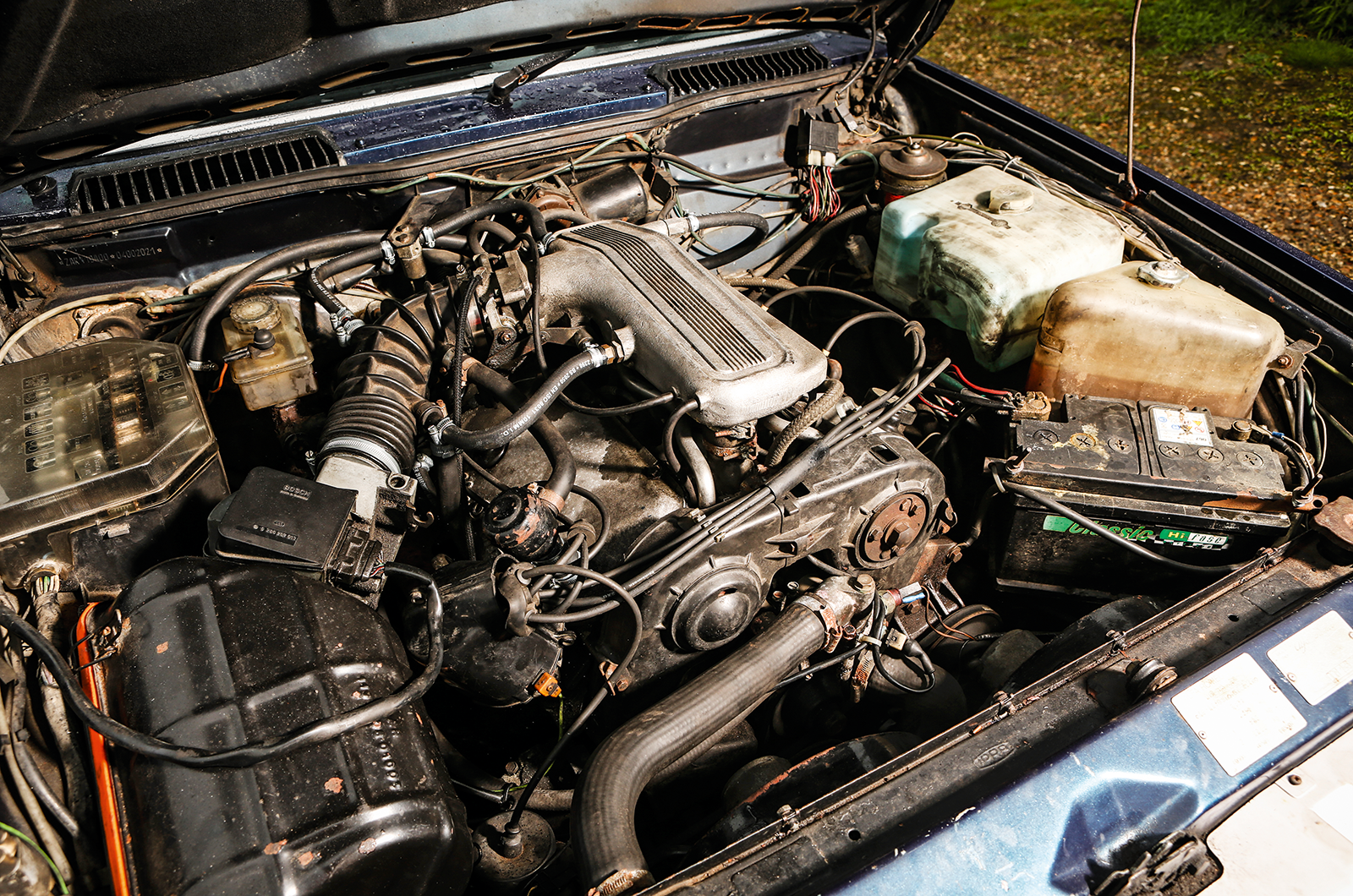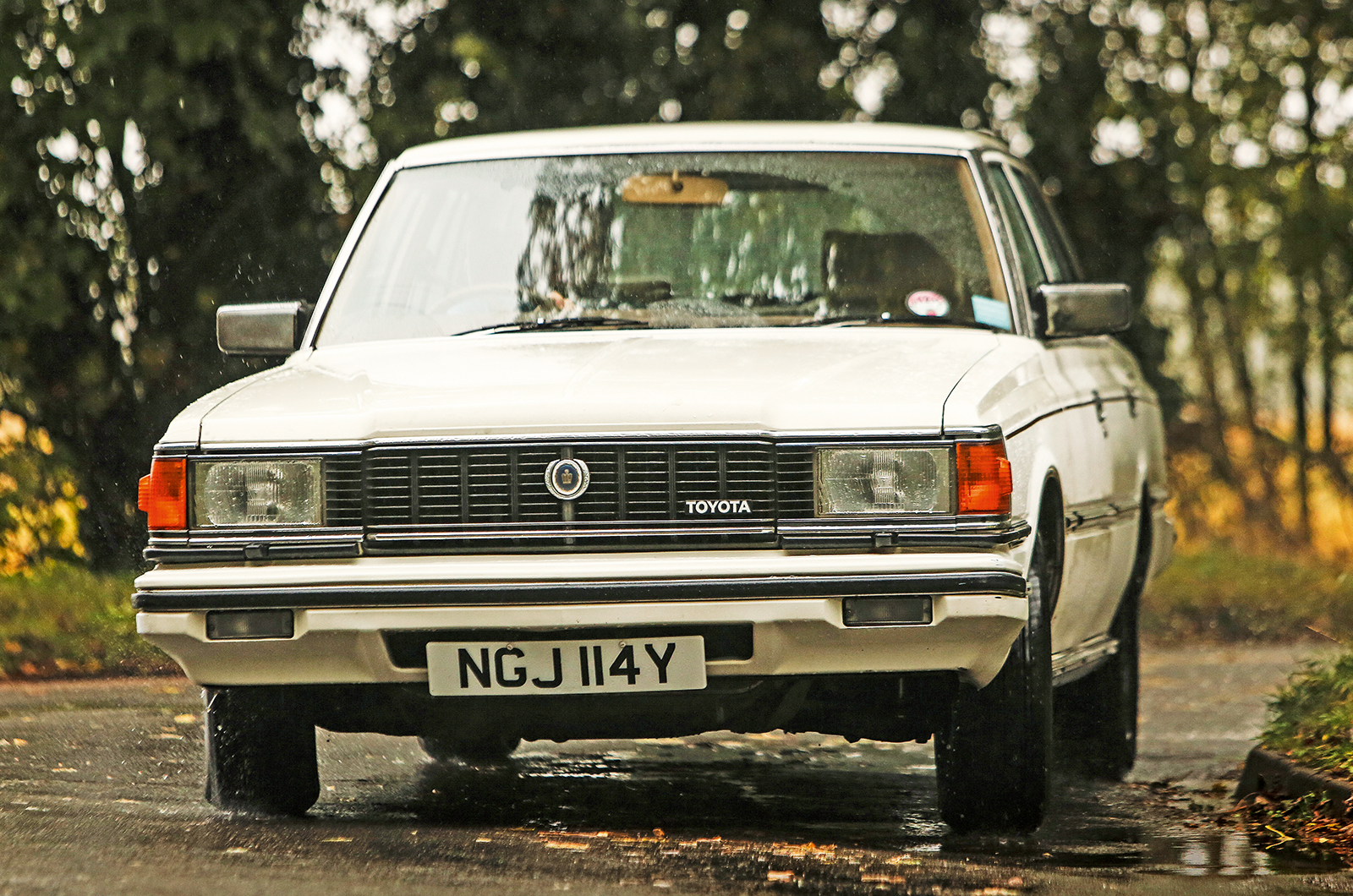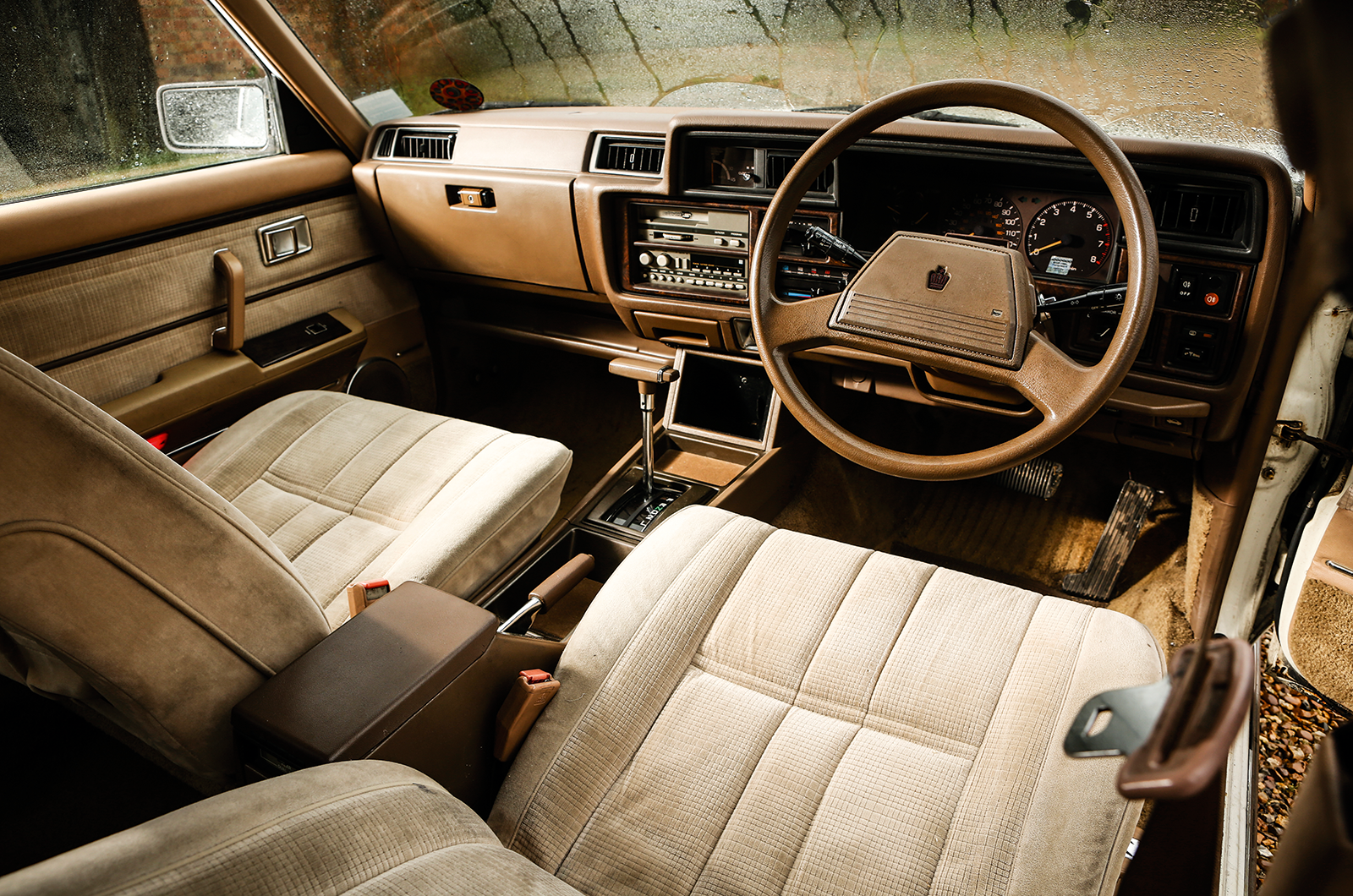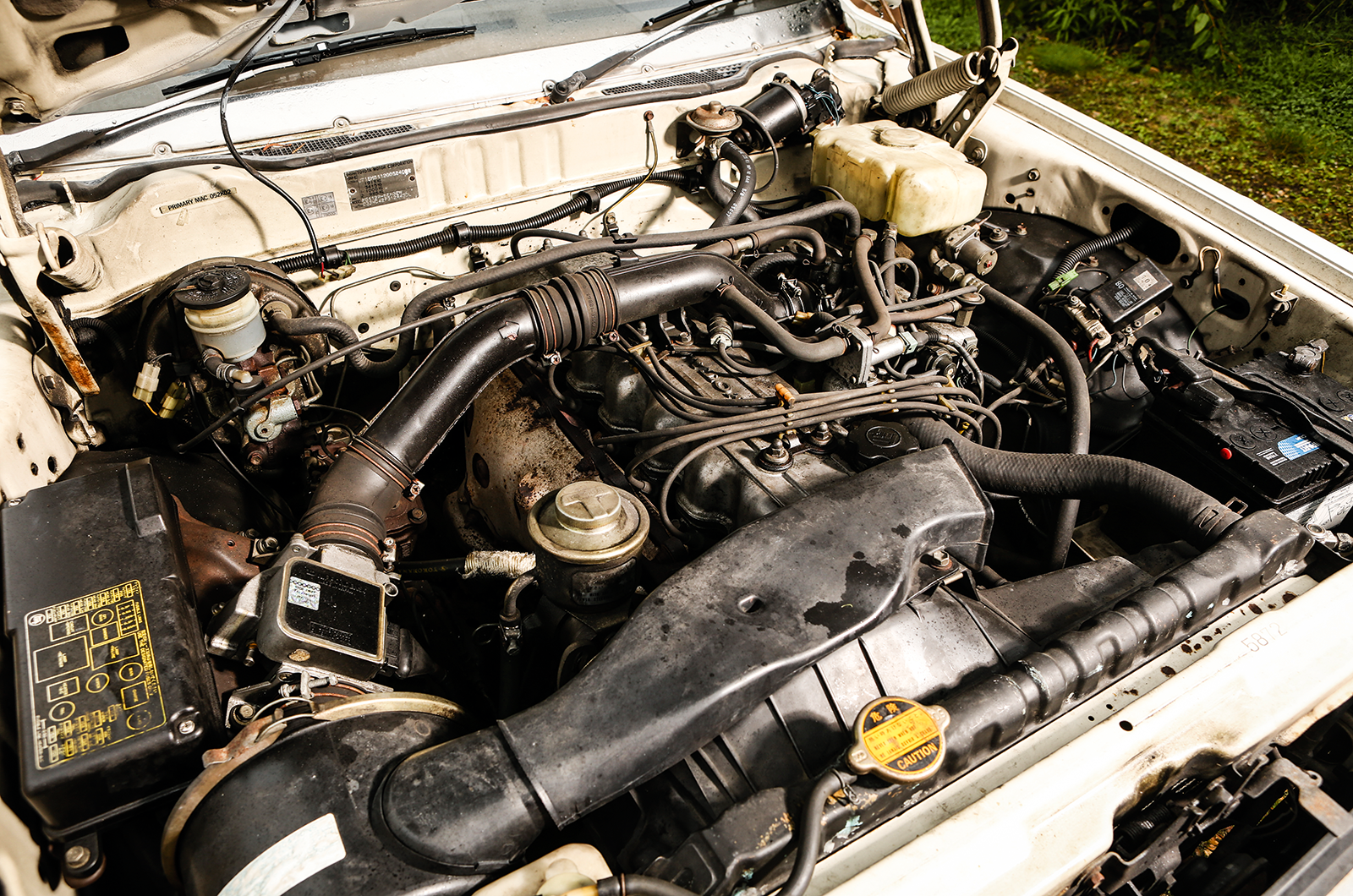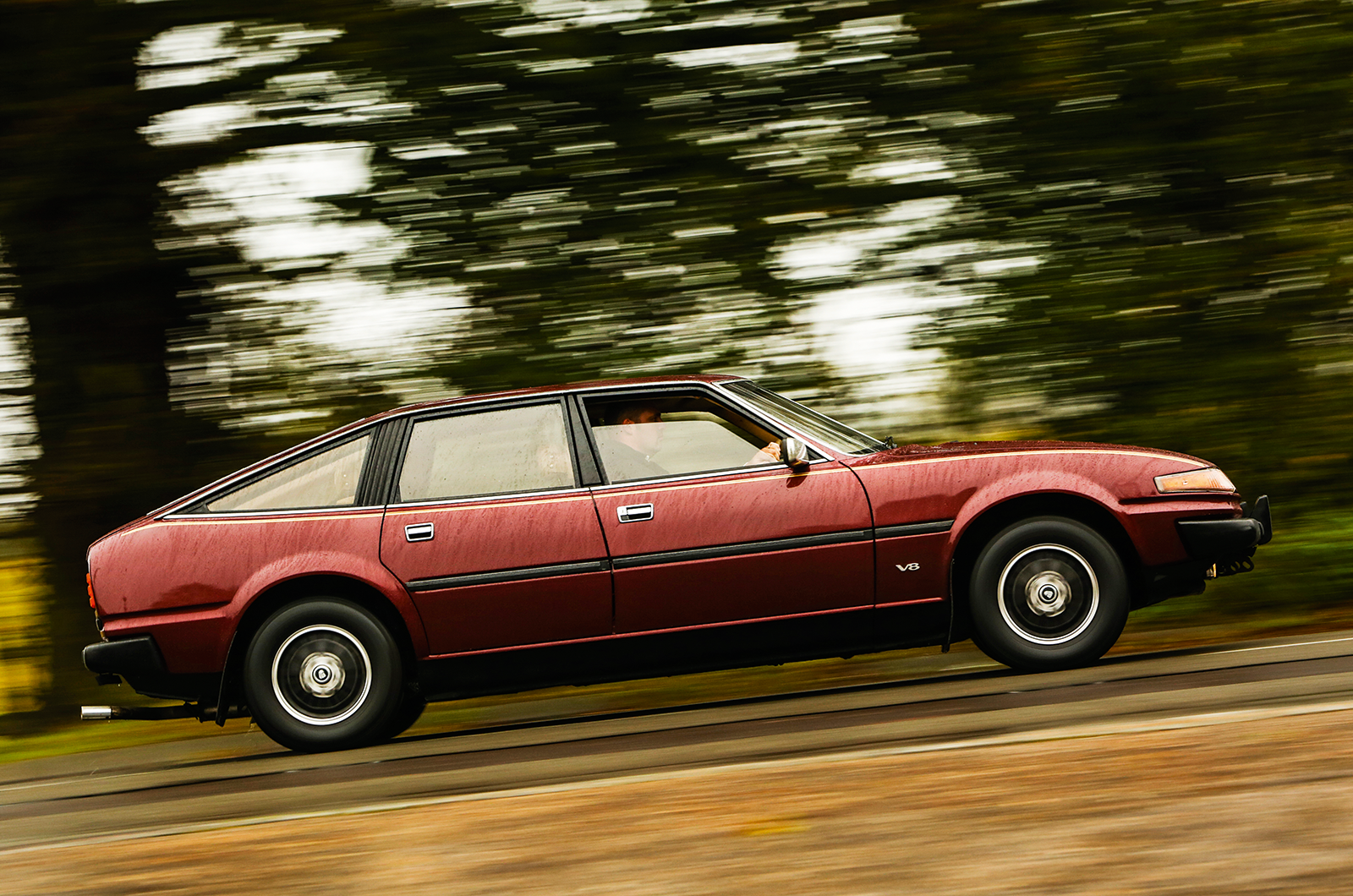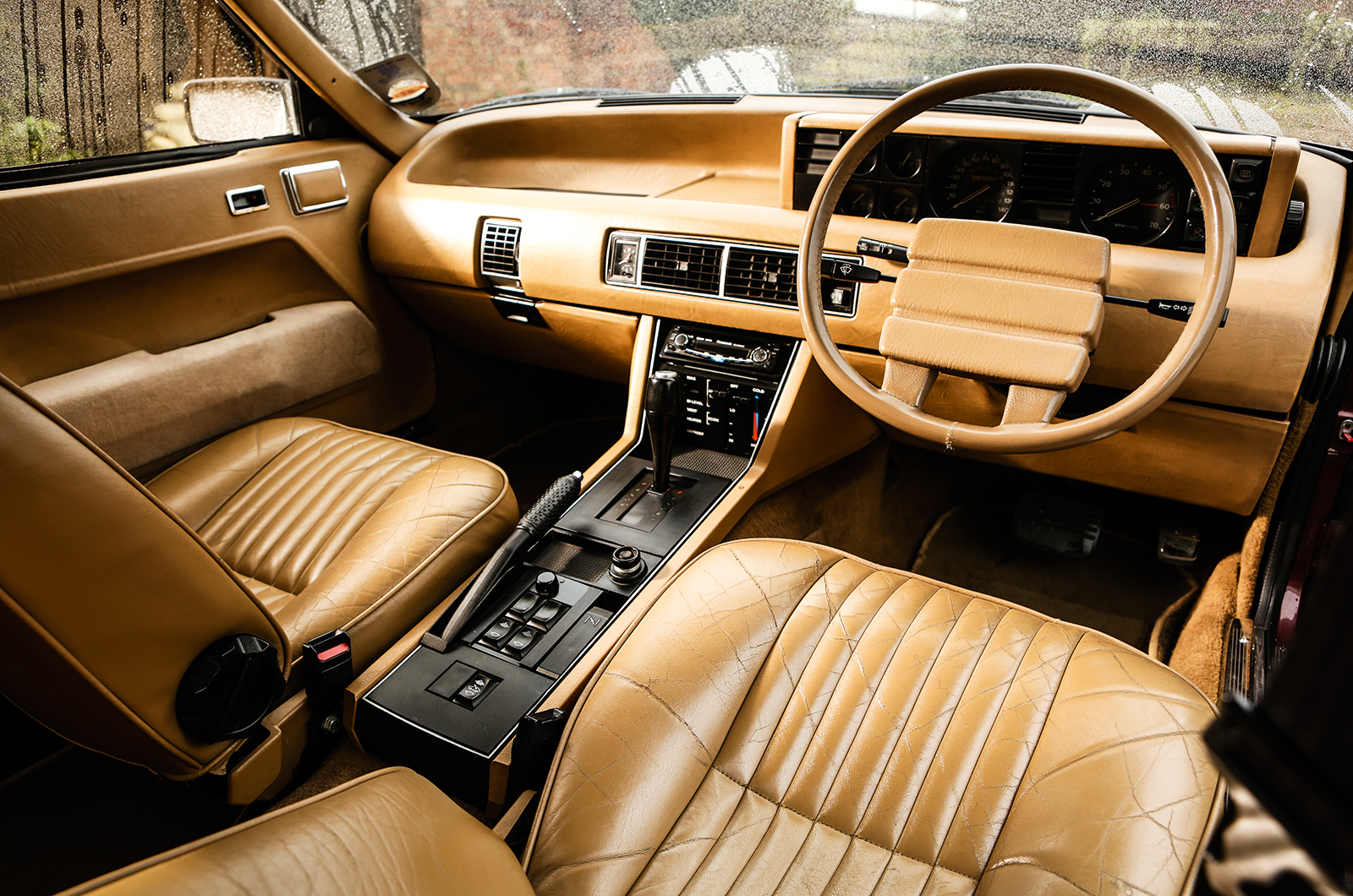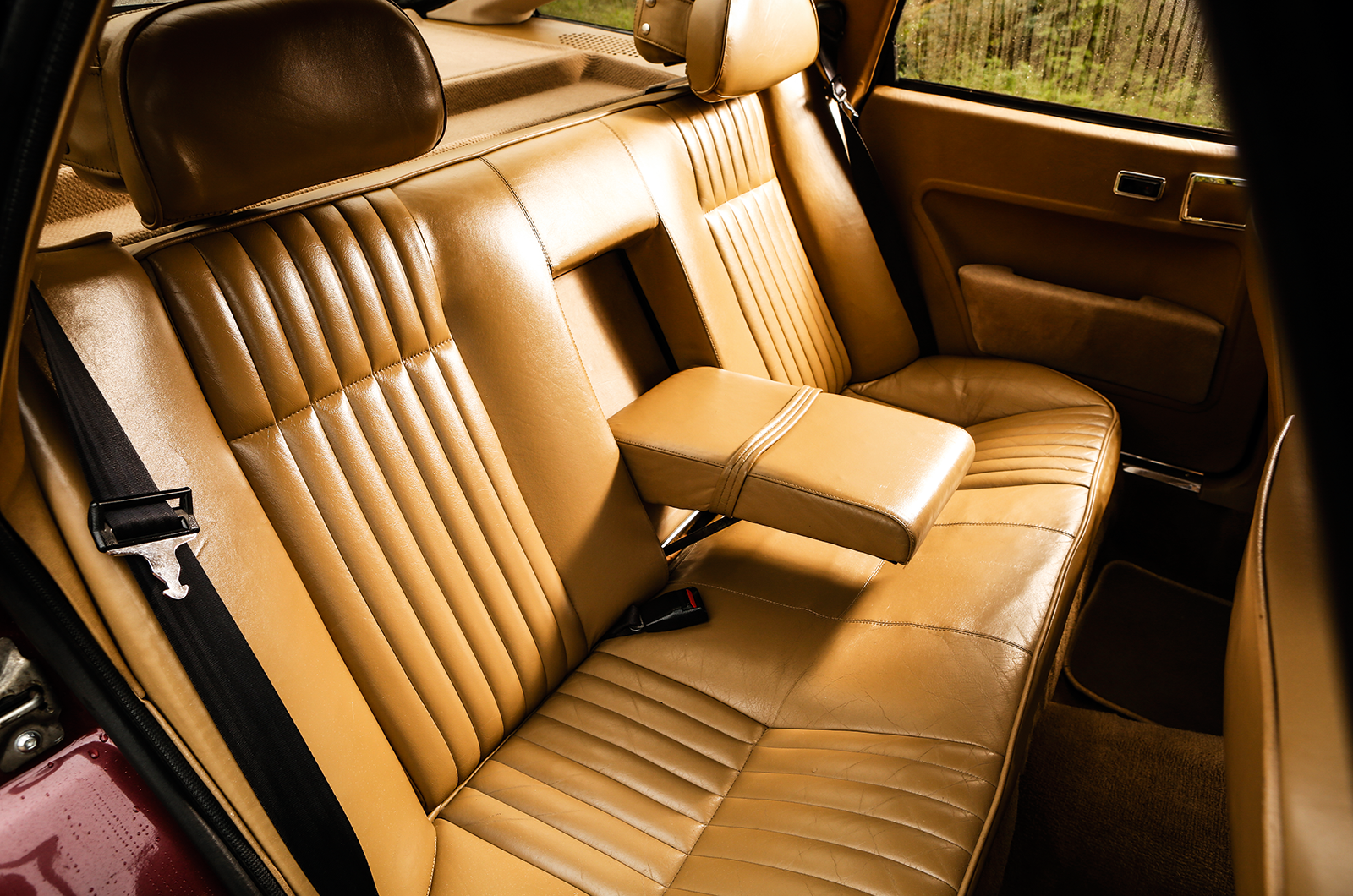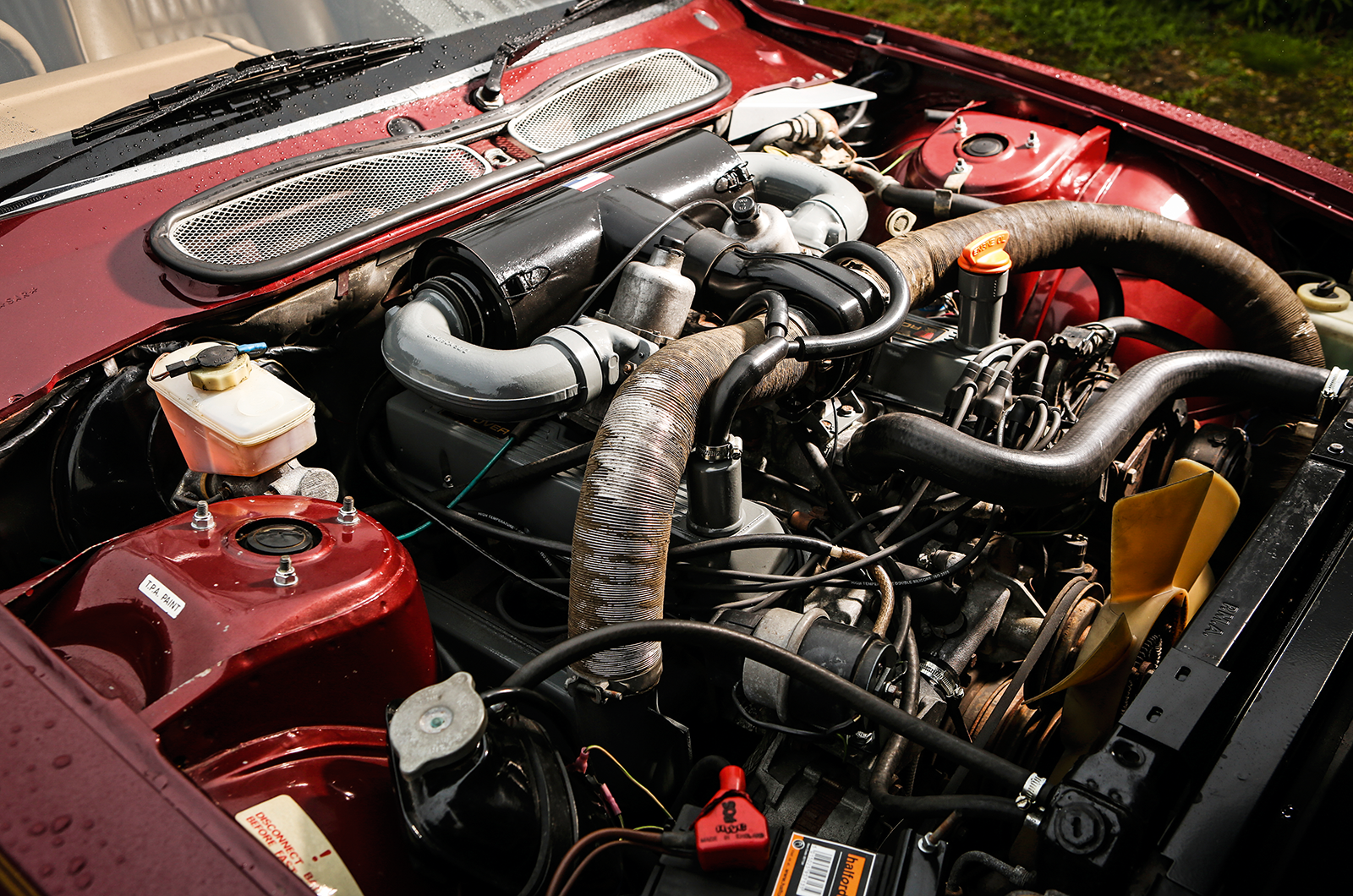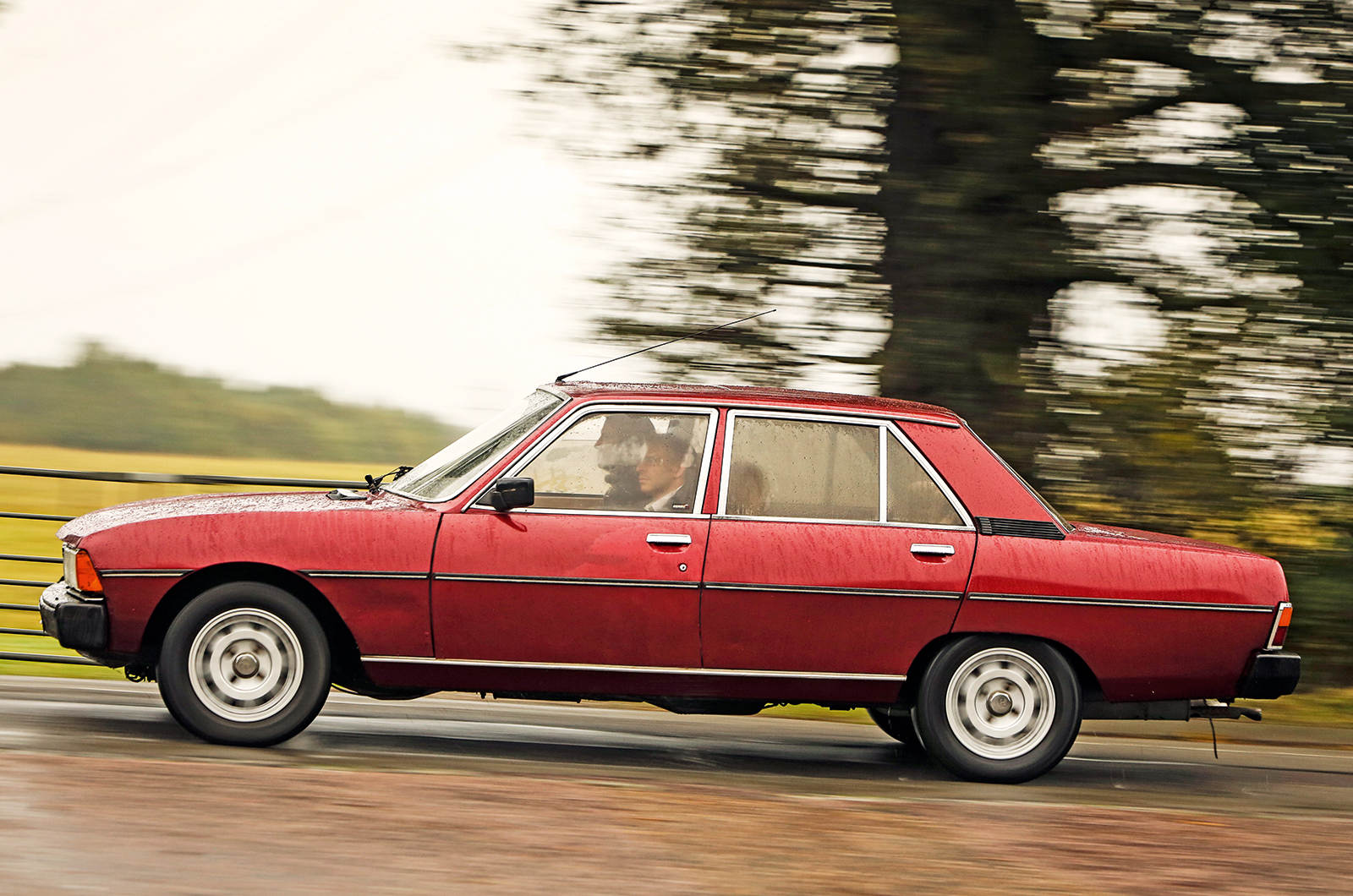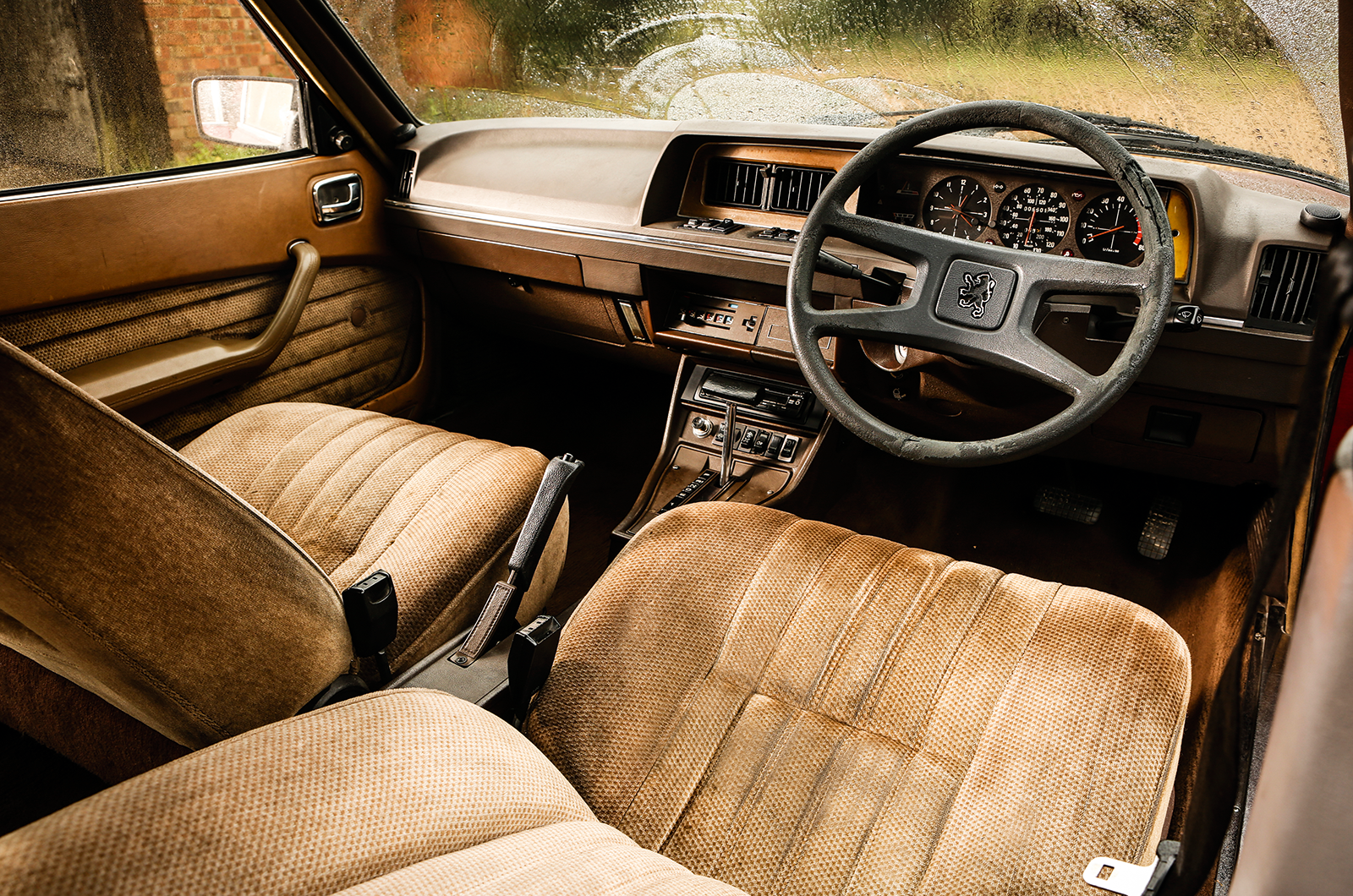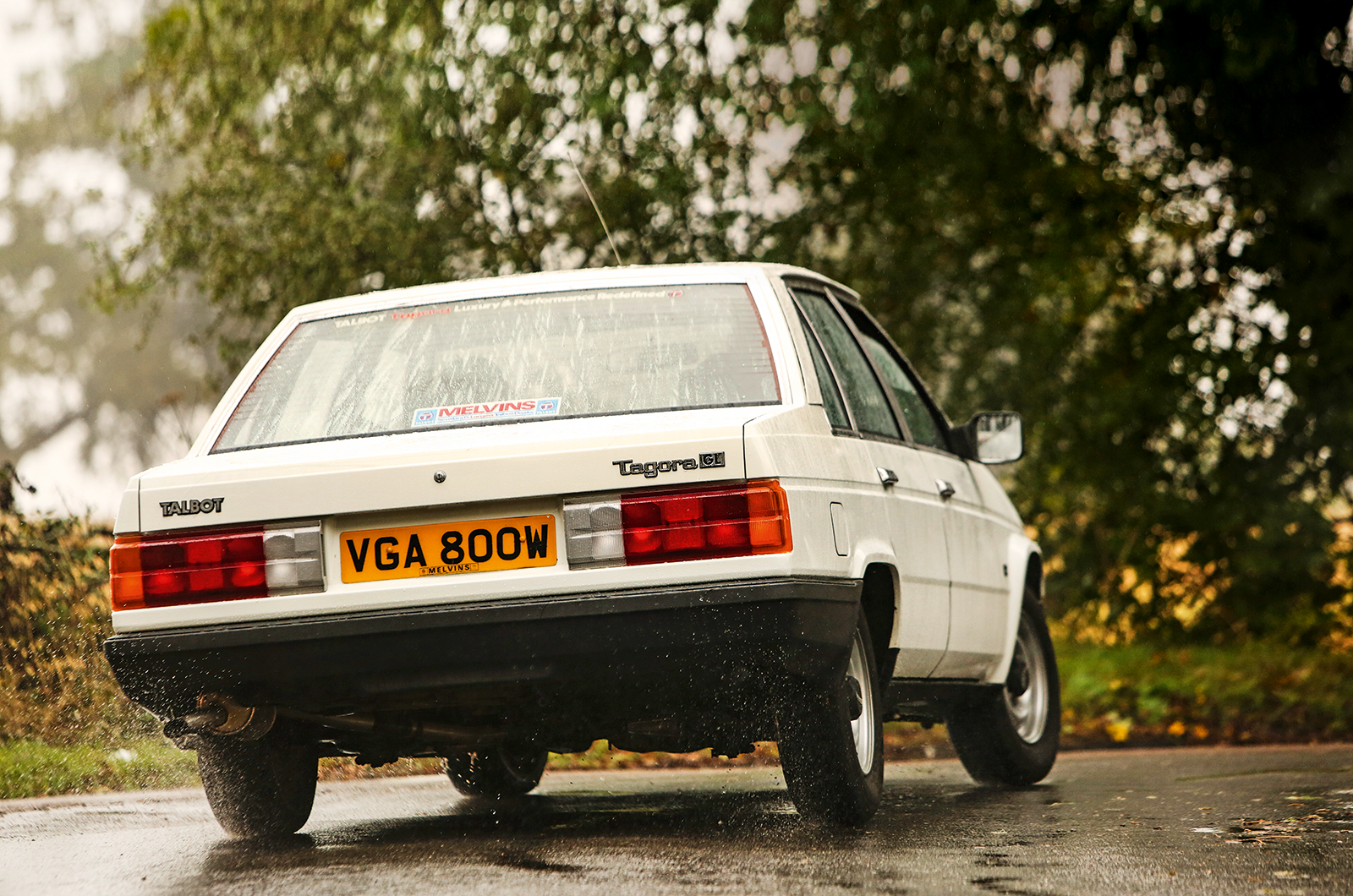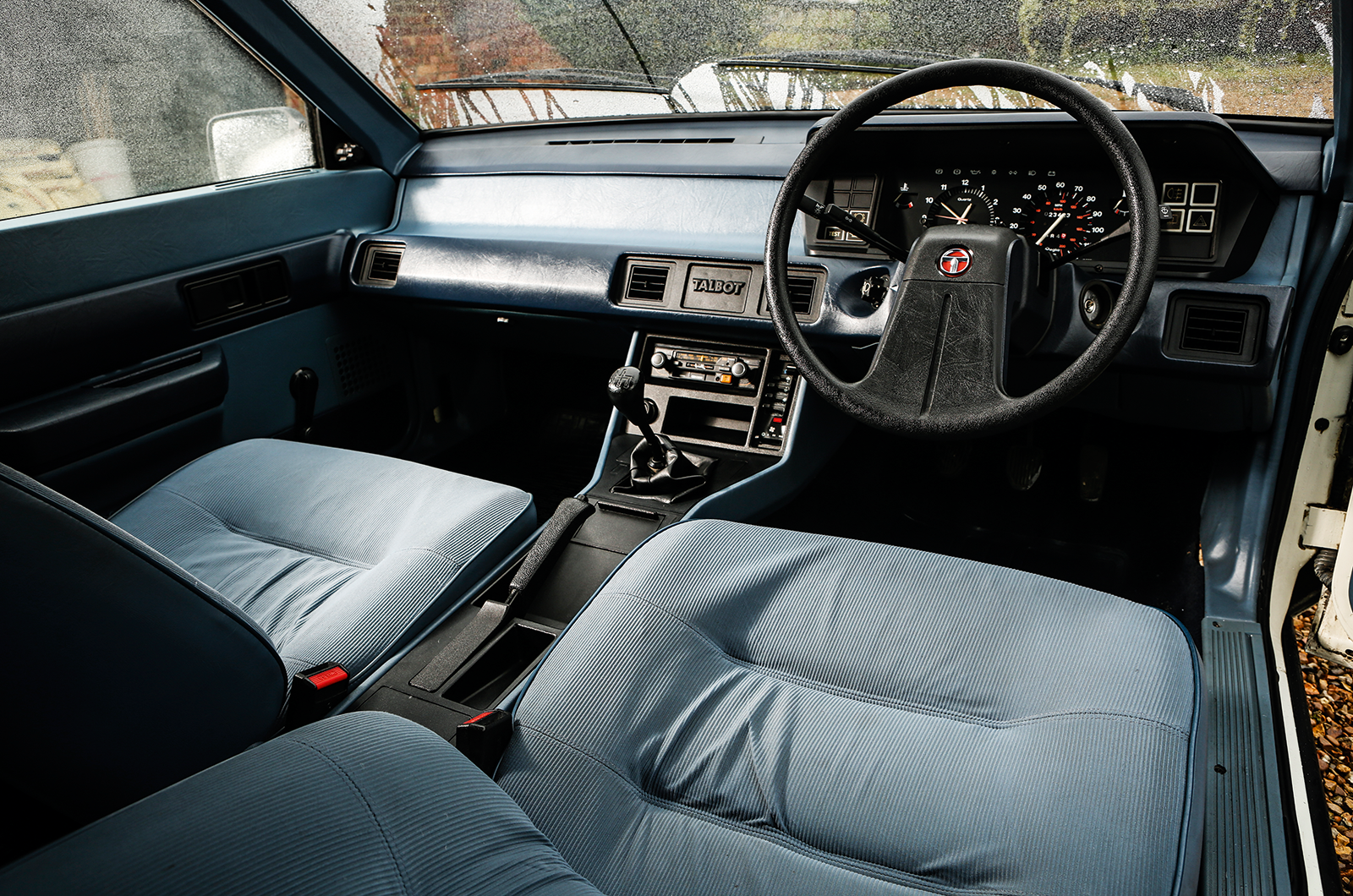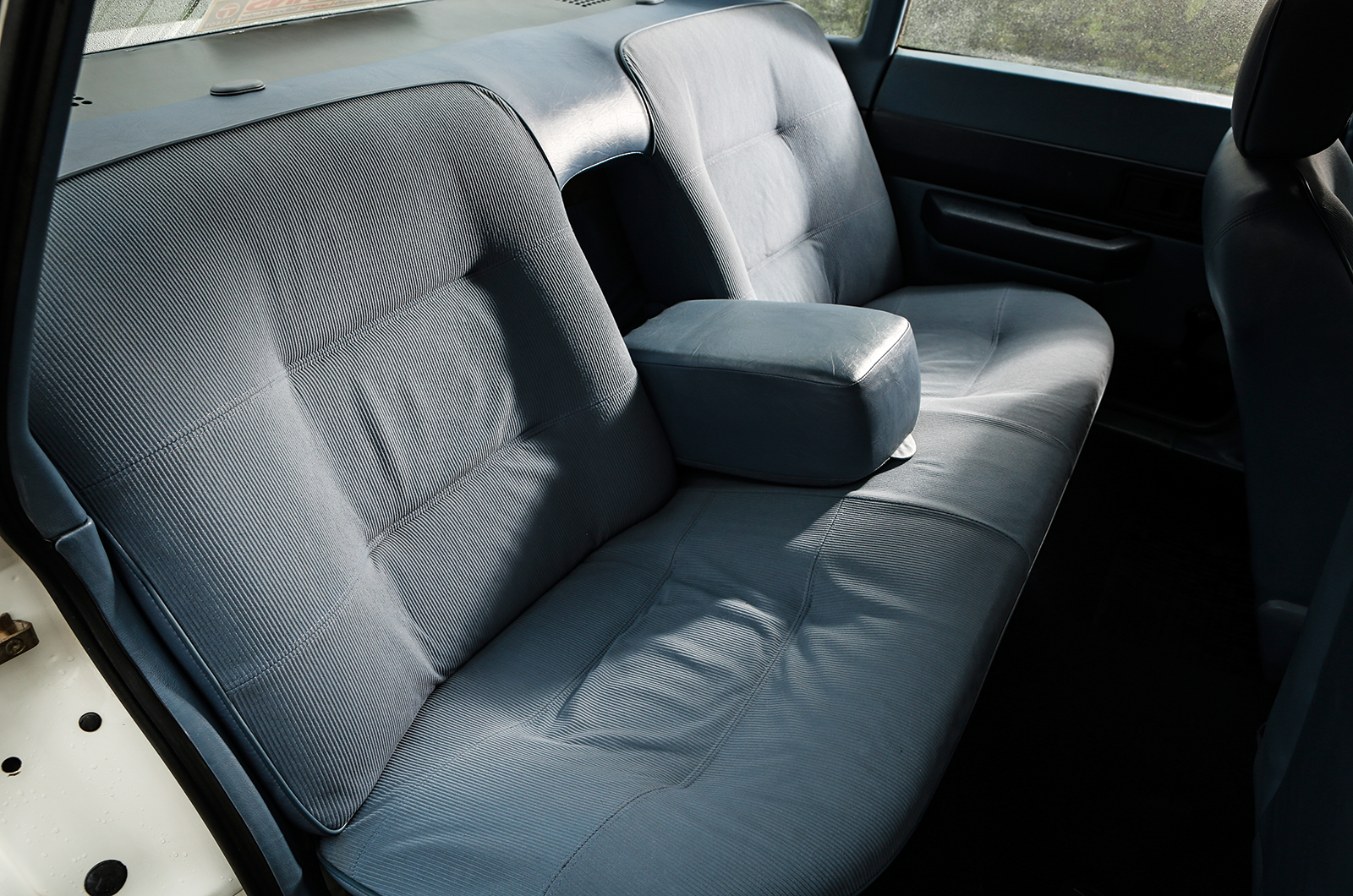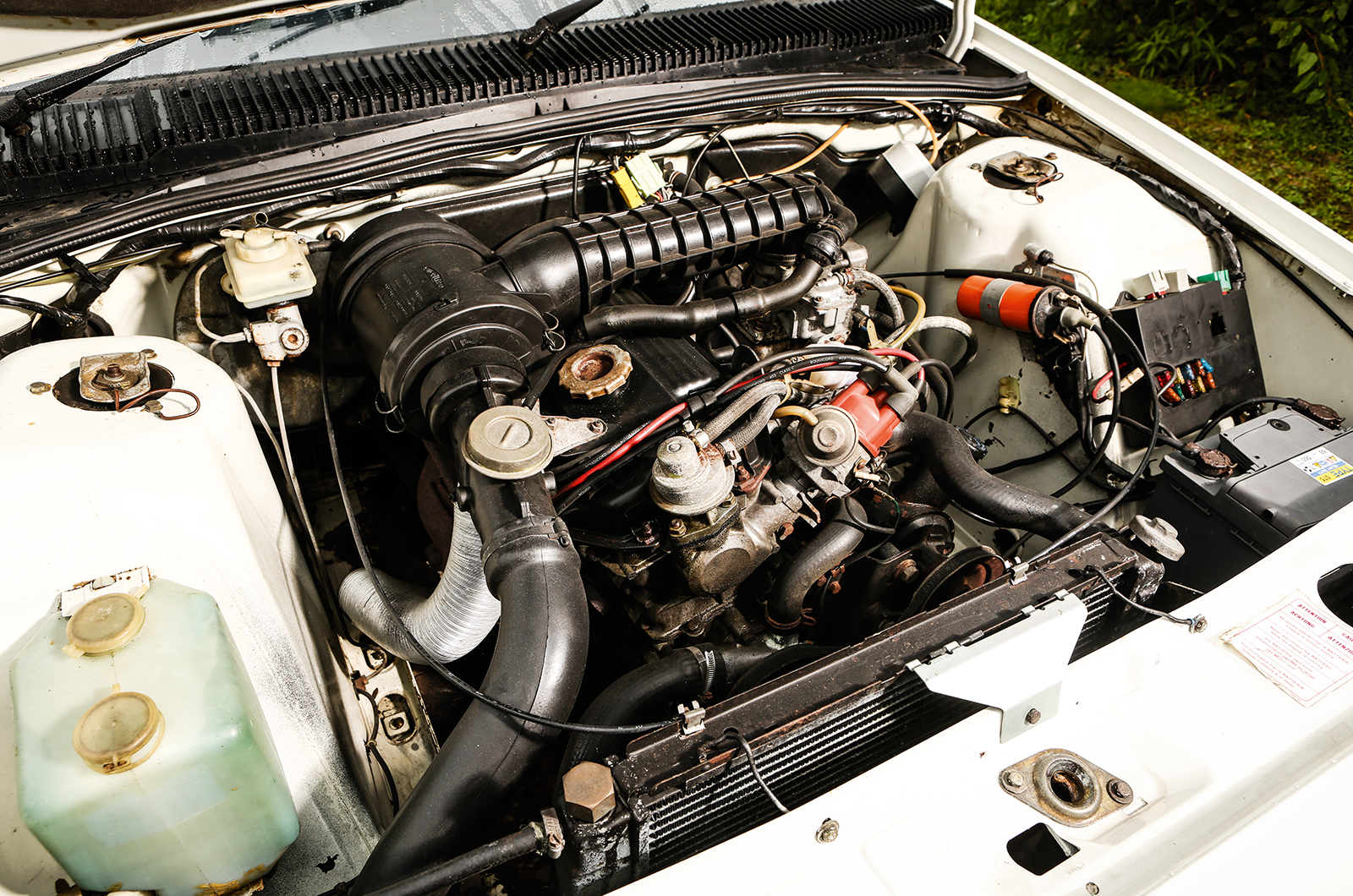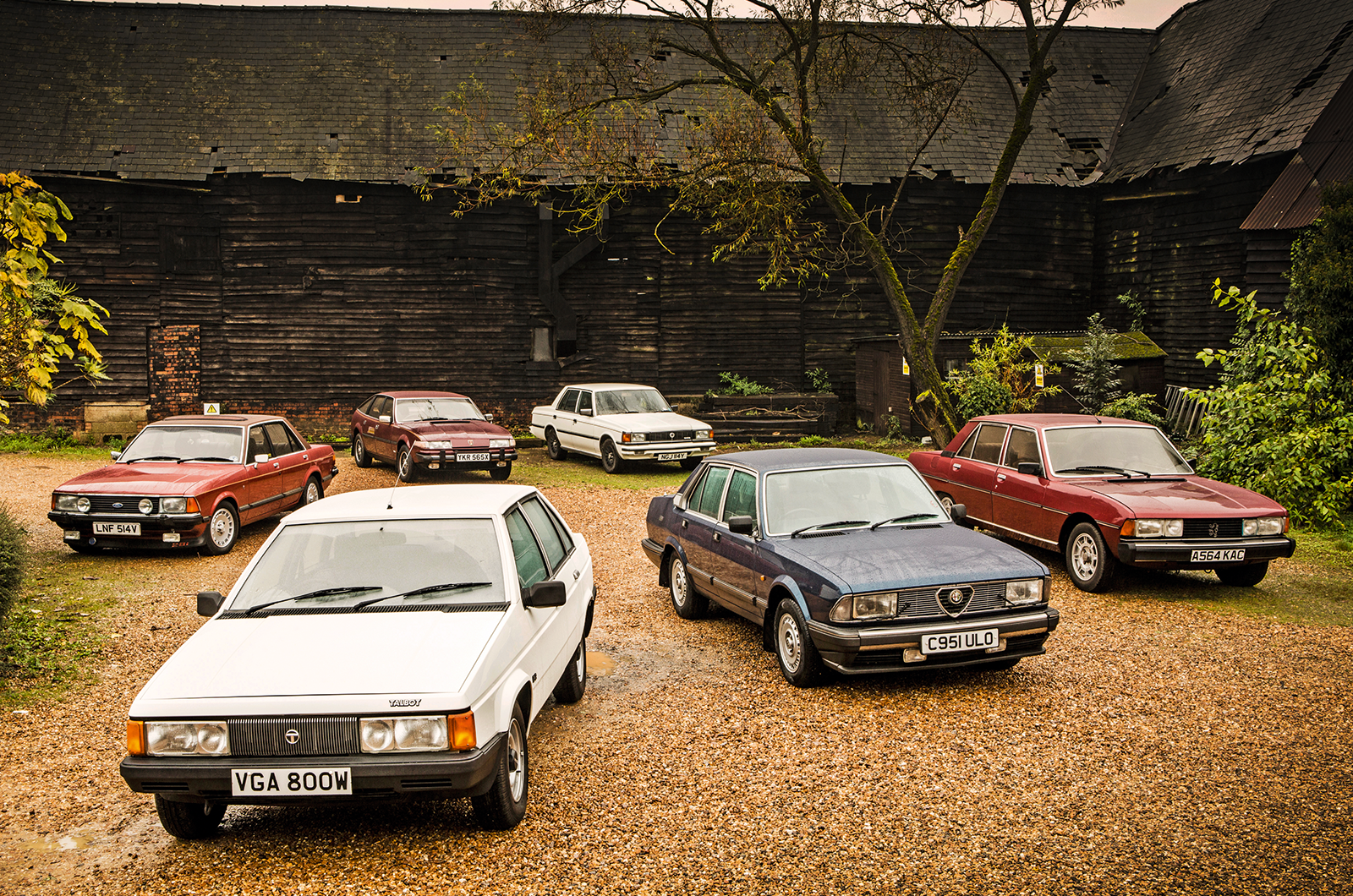By then, Rover was trying to rescue the model’s reputation for abysmal quality and reliability via reassuring new variants such as this flagship Vanden Plas with its full Connolly leather interior, machined alloy wheels, headlamp wash/wipe, as well as powered sunroof and mirrors.
The Rover SD1 3500’s smart dash design is set up for left- or right-hand-drive markets
Supplementing the 3500SE (and in effect replacing the 3500S), it was a vehicle that still cut a striking figure on British roads, with its chisel nose and practical hatchback, although the ‘four-door Ferrari Daytona’ comparisons are perhaps a little flattering.
That said, it made a brilliant racer.
The rationale behind the new Rover was to go back to basics and build a saloon along simple lines (so that it was easier to produce and service), but refine the details.
Hence the return to a live – but self-levelling and well-located – rear axle after the relatively exotic de Dion set-up of the Rover P6.
Rover gave its top-spec Vanden Plas Connolly leather-upholstered seats
If it didn’t ride as well as the earlier model, then the handling trade-off was probably worth it – especially because the power steering was so highly geared and precise.
By making it long-legged and relatively aerodynamic – things nobody was talking about much in 1976 – Spen King and his team made the best out of the sweet, punchy V8 engine.
As you sit low, admiring David Bache’s futuristic instrument pod, a sorted Rover SD1 feels too alert and together to be a true barge.
It is stable, swift and firmly resistant to body roll.
The Rover SD1 3500 is powered by a Buick-derived V8 engine
Five-speed manuals are fun, but the automatic that came as standard in the VdP is relaxing while somehow managing to retain the high gearing that still makes a nice SD1 V8 a pleasant motorway car.
In fact, for the price, the Rover was as good as anything in its class and much of its poor reputation centres around the camshaft-snapping and head-gasket popping frailties of the 2300/2600 variants, rather than the all-alloy V8.
Now, as then, it is the best thing about the car.
Thanks to: Chris Parmenter
Peugeot 604 STI
The understated Peugeot 604 has the best ride here
The 604 was Peugeot’s belated return to the big-car field, although it already had a reputation for making some of the world’s best-riding mid-range saloons.
The handsome Pininfarina-styled tintop enhanced the firm’s reputation for making conservative but refined middle-class machinery.
The shape doesn’t grab everybody, although I find it a mature and quietly elegant profile with an appealing chunky tail and large, squarely shaped doors that open enormously wide.
The Peugeot 604 STI offers plush velour and fine ergonomics
It was a shoe-in for ministerial duties, taking over from the Citroën DS as the ‘official’ French Government car.
The Peugeot 604 STI is a saloon with just enough of everything to keep you satisfied without being particularly astonishing.
Its slightly lumpy, wide-angle fuel-injected Peugeot-Renault-Volvo V6 engine (originally planned as a V8 and later to find a home in the Talbot Tagora) lacks either the muscle of the Rover or the exotic appeal of the Alfa Romeo.
Yet it is quantifiably more impressive than the thrashy Cologne V6 in the Ford Granada or the somewhat characterless Toyota engine.
The Peugeot 604 STI has lots of space for rear-seat passengers
Head for a corner and the 604 rolls rather more than the Rover or the Ford (and more than modern drivers would feel comfortable with), although it seems to hang on for ever on its Michelin TRX tyres.
Your way is plotted by notably accurate power steering and a general determination not to be knocked off line.
It feels bright inside this Peugeot, the view out commanding from wonderfully soft seats.
With its generous rear leg, head and shoulder room – plus its massive boot – the 604 was, and remains, an outstanding long-distance touring machine.
The Peugeot-Renault-Volvo V6 gained fuel injection from 1978; the 604 also came with turbo-diesel ‘fours’
But the best thing about the car is its ride. By the time that Peugeot killed off the 604 in the mid-’80s, it still offered a level of sophistication – in terms of civilisation and comfort – that was beyond even the expectations of this class of car.
Probably only the Jaguar XJ outshone its ability to deal with all kinds of poor roads. Even now it is hard to think of a modern car that rides with such a light touch.
The 604, no matter what the surface, never feels as if it is raising a sweat.
Thanks to: Gareth Davies
Talbot Tagora GL
This immaculate, 17,000-mile, ex-dealer demo Talbot Tagora is the only GL known in the UK
Conceived in the mid-’70s as a successor to the 180/2 litre, the C9/Tagora project was too far into development to be cancelled when Peugeot took over Chrysler Europe in 1979.
With its newly inherited Sunbeam/Alpine ranges swiftly rebadged as Talbots, the nascent Tagora of 1980 was the first new model under the PSA regime.
It was far more than a tweaked Peugeot under those angular lines; the 604/505 suspension was simply a last-minute PSA modification aimed at giving this orphan barge some family kinship.
There are hints of Alpine in the Talbot Tagora’s spacious cabin
Of the handful of Tagoras still alive in the UK, this is the only base-model GL known to survive.
That means just four manual speeds to harness its 115bhp and no power steering, although it was an option.
It feels austere and brittle in its fittings, but airy and spacious with clear dashboard architecture and no attempt at wood appliqué.
The V6 SX was quick, with a good power-to-weight ratio, but the 2.2-litre ‘four’ is a hesitant, gasping presence that urges the car along with no sense of enthusiasm and hardly seems worthy of what was a supple, sophisticated and sure-footed chassis.
The Talbot Tagora GL’s blue-cloth rear seats
It is rather flavourless to drive once you’ve overcome the thrill of being at the wheel of a car that is so close to extinction.
The Tagora’s shape was signed off by Roy Axe in Coventry as early as 1976.
It might have fared better had it appeared then, but production didn’t begin at the old Simca Poissy plant until 1980.
It was all over by 1983, with just 23,400 built. The Tagora wasn’t a bad car, just a bit pointless in that it didn’t offer anything over the competition.
The Talbot’s 2155cc ‘four’ makes 115bhp
Compared to their earlier counterparts, I can’t help feeling that our ’80s barges have survived less well – their ranks thinned by rust, bangering and an apathy born of plummeting desirability in a world that values only prestige ‘brands’.
Lucky for us that every car has someone to love it in its old age even if, like the Tagora, it was born into the world with the odds stacked against it.
It is sobering to think that – from being relatively commonplace once upon a time – many of these classic cars are now among the rarest on the UK’s roads.
Thanks to: Tony Owen
This was first in our March 2015 magazine; all information was correct at the date of original publication
Factfiles
Ford Granada 2.8i Ghia
- Sold/number built 1977-’85/639,440
- Engine all-iron, ohv 2792cc V6
- Max power 160bhp @ 5700rpm
- Max torque 162Ib ft @ 4300rpm
- Suspension: front double wishbones rear semi-trailing arms; coil springs f/r
- Transmission Ford C3 automatic, RWD
- Weight 3100Ib (1406kg)
- 0-60mph 8.9 secs
- Top speed 117mph
- Price new £9615
Alfa Romeo Alfa 6
- Sold/number built 1980-’86/12,070
- Engine all-alloy, sohc-per-bank 2492cc V6
- Max power 158bhp @ 5600rpm
- Max torque 156Ib ft @ 4000rpm
- Suspension: front double wishbones, torsion bars rear de Dion axle, coil springs
- Transmission ZF three-speed auto, RWD
- Weight 3241Ib (1470kg)
- 0-60mph 11 secs
- Top speed 115mph
- Price new £11,900
Toyota Crown Super Saloon
- Sold/number built 1980-’83/823,000
- Engine iron-block, alloy-head sohc 2759cc straight-six
- Max power 145bhp @ 5500rpm
- Max torque 123Ib ft @ 4000rpm
- Suspension: front double wishbones rear live axle; coil springs f/r
- Transmission five-speed manual or four-speed auto, RWD
- Weight 3164Ib (1435kg)
- 0-60mph 10.4 secs
- Top speed 114mph
- Price new £865
Rover 3500 Vanden Plas
- Sold/number built 1976-’86/303,343 (all models)
- Engine all-alloy, ohv 3528cc V8
- Max power 155bhp @ 5250rpm
- Max torque 198Ib ft @ 2500rpm
- Suspension: front MacPherson struts rear live axle, coil springs
- Transmission three-speed Borg-Warner automatic, RWD
- Weight 3097Ib (1405kg)
- 0-60mph 9.1 secs
- Top speed 122mph
- Price new £9200
Peugeot 604 STI
- Sold/number built 1975-’85/240,100
- Engine all-alloy, sohc-per-bank 2664cc V6
- Max power 144bhp @ 5500rpm
- Max torque 159Ib ft @ 3750rpm
- Suspension: front MacPherson struts rear semi-trailing arms, coil springs
- Transmission five-speed manual or three-speed automatic, RWD
- Weight 3252Ib (1475kg)
- 0-60mph 9.4 secs
- Top speed 115mph
- Price new £8522
Talbot Tagora GL
- Sold/number built 1981-’84/23,400 (all)
- Engine all-alloy sohc 2155cc ‘four’
- Max power 115bhp @ 5400rpm
- Max torque 133Ib ft @ 3200rpm
- Suspension: front MacPherson struts rear semi-trailing arms, coil springs
- Transmission four/five-speed manual or three-speed automatic, RWD
- Weight 2767Ib (1255kg)
- 0-60mph 11.3 secs
- Top speed 106mph
- Price new £7000
Enjoy more of the world’s best classic car content every month when you subscribe to C&SC – get our latest deals here
READ MORE
Daimler Sovereign vs Peugeot 604: cross-Channel showdown
Toyota Crown: foreign affairs
Guilty pleasures: Alfa Romeo Alfa 6
Martin Buckley
Senior Contributor, Classic & Sports Car
